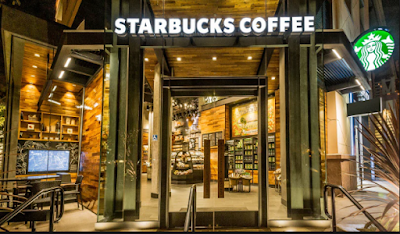FMCG SECTOR OF INDIA
Fast Moving Consumer Goods (FMCG)
sector is the 4th largest sector in the Indian economy. Growing
awareness about the products among the consumers, easier access and changing
lifestyle among the Indians have been the key drivers for this sector. The FMCG Industry is characterized by a
well-established distribution network, low penetration levels, low operating
cost, lower per capita consumption and intense competition between the
organized and unorganized segments.
HISTORY-
The
FMCG sector had a relatively modest growth from 1950’s to 1980’s. The growth in
the FMCG sector started in the 1990’s when India opened its economic door to
the rest of the world. With the entry of the global players in the country,
this sector has increased at a large rate making it the 4th largest
sector in the country.
GROWTH -
The
FMCG sector has grown around 16% from 2006-2013. The industry has tripled in
size in the last decade. In the last decade it has grown around 12% per annum. It
is expected to grow at 14 -15 % per annum in the next decade with a market
value of around $220 – 240 Billion.
MARKET SIZE -
It is the 4th
largest sector in the Indian economy. Its market is expected to be around USD $
185 Billion. Revenues of FMCG sector
reached US$ 49 Billion in the year 2016 and are estimated to reach US$ 103.7
billion in 2020.
TARGET MARKET -
The FMCG sector caters to both the urban and the rural market. In the financial
year 2018, rural India accounted for 45 percent of the total FMCG market
revenue. Rural FMCG market size is expected to touch US$ 220 Billion by 2025
from US$ 29.4 Billion in 2016. Urban market is growing at a rapid pace and
accounted to a revenue share of 55 percent of the total revenue of the FMCG
sector in India. According to CRISIL
report FMCG urban segment will have a steady revenue growth of 8% in the
financial year 2019.
SEGMENTS –
The
segment food and beverages consists of cereals, bakery products, snacks, tea,
coffee, soft drinks, fruits, vegetables, dairy products, chocolates etc. the
healthcare sector consists of OTC products and ethicals. The household and
personal care sector consists of oral care, skin care, cosmetics, house cleaners,
paper products etc.
IMPACT ON THE INDIAN ECONOMY -
The FMCG
sector is playing a huge role in the Indian economy be it employment generation
or development of the society on a whole. Approximately
12-13 million retail stores in India, out of which 9 million are FMCG kirana
stores. Thus the sector is responsible for the livelihood of almost 13 million
people. Taxes collected from the FMCG products be it direct tax or indirect tax
amounts to approximately US $25 Billion,
out of which it contributes to the exchequer around US $ 6.5 Billion. The FMCG
companies like Hindusthan Unilever and ITC are playing a key role in the CSR
activities. ITC through its programme ITC
Echoupal And Choupal Sagars is selling both agricultural inputs and
daily needs products. ITC’s rural e-network enables farmer connectivity and
provides an easy way for farmers to get better profitability and control
through access to timely information. Similarly HUL through its programmes like
HUL’s Shakti Amma Network is
pioneering a rural entrepreneurship model amongst women who became HUL
distributors.
MARKET PLAYERS-
The FMCG sector consists of various companies like ITC,
HUL, P&G, Dabur, Marico etc who all are market leaders in their respective
product segments.
MAJOR INVESTMENTS IN THIS SECTOR-
v As of January
2018, Carlsberg India Pvt Ltd has started a new beverage factory in Karnataka that
will manufacture the company’s existing brand with annual capacity of 80
million litres.
v Amazon India
is planning to invest significantly over the coming months for expanding its
grocery and food business, by launching more products and categories and
forming new partnerships with huge grocery and supermarket chains.
v In January
2018, Eveready Industries India had entered into a joint venture with Wings
Group, a large conglomerate and one of the major FMCG companies in Indonesia
called, Universal Wellbeing. Through this JV with Universal Wellbeing, Eveready
has planned marketing and distribution of a large basket of FMCG products in
India.
v Patanjali is
looking to consolidate its marketshare and is planning to invest it different
parts of India to make its presence felt strongly in this sector.
REASONS FOR SUCH GROWTH IN THIS SECTOR -
v India’s GDP
per capita at current prices is expected to increase from US$ 1,481.56 in 2012
to US$ 3,273.85 in 2023. As a result of which people’s purchasing power will
increase. It will result in the increase of the consumption expenditure of the
people, which will lead to the increase in demand for the FMCG goods. This will
lead to the growth of the Industry.
v Uniform rate
of GST across the country has lead to the uniform rate of taxation on the
products throughout the country. As a result it has lead to the decrease in the
cascading effect of taxation leading to the fall in the artificial hike in the
price of the commodities.
v With the rise
in disposable incomes, mid and high-income consumers in urban areas have
shifted their purchase trend from essential to premium products
v The relaxation
of the government rules on licensing, opening up of the Indian economy for the
foreign investors and providing relaxation in the budget has lead to the growth
of the Indian economy.
v Increase in the number of the users in the
number of internet users. As out of every 3 FMCG customers 1 visit online o
purchase their products before visiting the store to purchase their product.
v On
the policy front, the government gave Investment approval of up to 100% foreign
equity in single brand retail and 51% in multi-brand retail.








a very well simply explained report
ReplyDelete